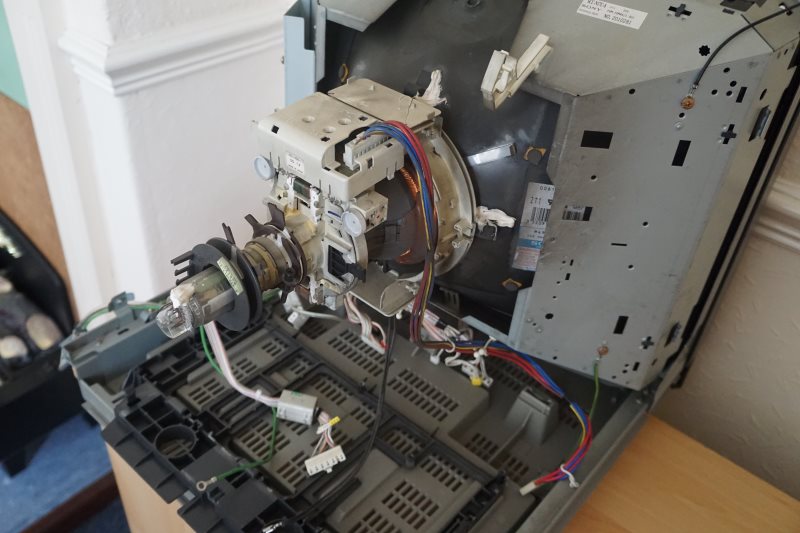I started posting about this in the Discord but thought it was better to continue on the forums.
My PVM20M4A has needed some maintenance for a while now. I was aware a couple of capacitors close to the flyback transformer are in bad shape. It also has a few minor geometry issues which I had hidden in the over-scan area and very occasionally the colour hue would change slightly but a power cycle always corrected in the rare times it has happened.
Since I had been away traveling in Japan for a month, the 20" has had plenty of time to discharge as it was left unplugged and it feels like the perfect time to give this CRT a good cleaning and a recap.
In the mean time my 9" BVM (that has been sitting in my storage cupboard for over a year) is replacing it in my setup has my 14" PVM is RGB/Composite only.
WARNING:
I am just an amateur hobbyist who has slowly self taught himself some basic skills required for modding consoles and maintenance. I am in no way trained or certified, have large gaps in my knowledge and this will be the biggest project I have worked on so far.
So here she is:
Unfortunately I don’t have decent pictures of the issues prior to starting work on this, so this is a several years old photograph of the best settings I was able to produce using a grid test will have to suffice. As you may or not be able to see I had to crop out a few lines at the top of the screen into the overscan area to hide a flagging issue in the upper top right area and their are some issues in both lower corners of the screens geometry.
Just a quick note regarding the “A” region:
The PVM20M4A is a southern hemisphere CRT (from Australia) that somehow ended up being used in the UK (northern hemisphere). While this has not appeared to cause any real issues, it does however hate being put in close proximity to my other broadcast monitors (correct hemisphere) and starts to display the picture with some “wobbling” until I put some distance between them while powered on.
TOOLS USED:
- Phillips Screwdriver
- Hakko FX-888D Soldering Station
- Hakko Solder Sucker
- MG Chemicals Solder (0.032" Diam 22 Gauge 2.2% Flux “No Clean” Sn60/pb40)
- Desoldering Braid (1.5mm Width)
- Liquid Flux
- 99% Isopropyl Alcohol
- Cotton Buds
- Long Nose Pliers
- Mitutoyo Vernier Caliper
- Fluke 15B+ Digital Multimeter
LINKS:
Sony PVM 20M2x User Manual
Sony PVM 20M2x Service Manual
TO BE CONTINUED:

















 Good luck!
Good luck!















 C161 - 47µf 25v = 47µf
C161 - 47µf 25v = 47µf C167 - 470µf 10v = 450.6µf
C167 - 470µf 10v = 450.6µf C522 - 2200µf 16v = OL
C522 - 2200µf 16v = OL